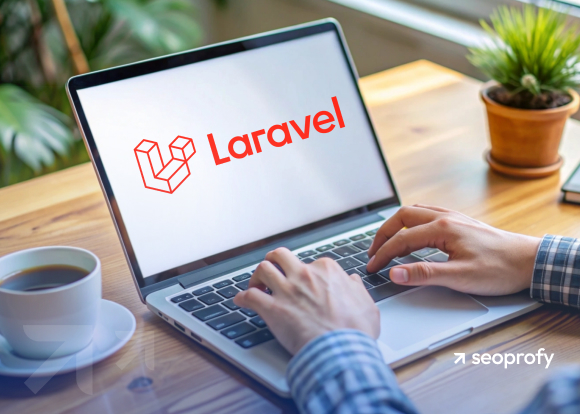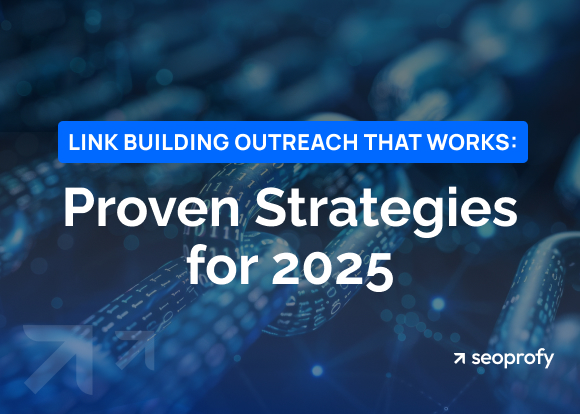You’ve built a great product, invested in content, and optimized your site, but traffic is still lagging. Why? Because Google ranks trusted sources. Without quality backlinks, even the best websites can stay invisible. That’s where SaaS link building comes in: It’s your gateway to better rankings and lasting visibility.
But links do not appear out of nowhere. No one rushes to connect to a young brand. And if you do not have outreach experience or a solid strategy, the process can turn into an endless loop with no progress. This SaaS link building guide covers only proven methods we’ve used across dozens of projects. No filler. Just best practices that actually get results for our clients and will for your website.
- A link building strategy is the foundation for SaaS business growth. Without backlinks, it becomes harder to reach top positions, even with strong content.
- Software as a service companies need inbound links not just for boosting domain rating (DR) but for building trust, improving search visibility, and generating leads.
- The strongest link building strategies for SaaS firms combine valuable content, partnerships, smart outreach, and regular analysis.
What Is Saas Link Building?
Link building for SaaS is the process of getting backlinks that help subscription-based software businesses grow their search visibility and attract the right users. These companies aren’t just competing with each other in search. They also compete with large media outlets, industry blogs, and SaaS aggregators.
Because of this, standard link building methods don’t really cut it. Mass outreach, generic directories, random blogs — most of the time, they just don’t deliver. What SaaS companies really need are strategic, high-quality links. They should pull in the right audience, lock the product into its niche, and push the brand forward.
These are links from trusted industry publications, data-driven research pieces, and integration partners with shared audiences, not just any referring domain. They can point to blog content, product features, pricing pages, or whatever helps users and search engines understand the value you offer.
Why Is Link Building Important for SaaS Businesses?
Without backlinks, even good content on your blog and product pages looks like a rookie’s opinion in Google’s eyes. Want to move up? You’ll need to prove your site is worth trusting. And relevant links are one of the strongest signals you can send.
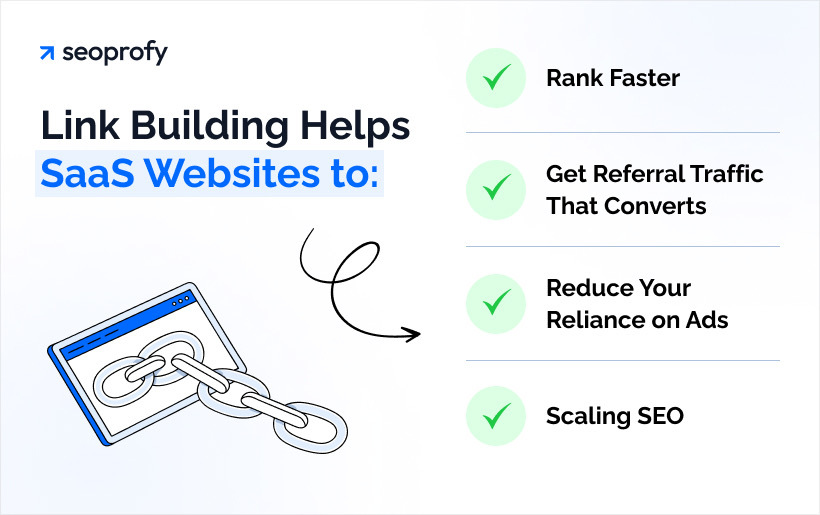
Backlinks Help You Rank Faster
Backlinks remain one of Google’s strongest ranking signals. But their impact becomes especially clear in competitive niches. When top positions in search are filled with high-authority domains, great on-page SEO alone often isn’t enough to break into the top 3.
That’s why acquiring links consistently is so critical for SaaS companies. Two companies might publish equally strong content, but the one actively building links will usually come out on top. Our SEO data backs this up: pages that rank at the top of Google have approximately 3.8 times more backlinks than those lower down.
If stats aren’t enough, here’s a clear example based on the search engine result pages (SERPs) for the query “HR software for small business”. The lower the ranking, the fewer backlinks the page tends to have:

Strategic Placements Drive Referral Traffic That Converts
Referral traffic from top platforms can be more valuable than random visitors from search. People who click on those links are already interested, comparing tools, and ready to make a decision. If a SaaS tool integrates with another popular product, a link from the partner’s docs or blog can send a constant flow of users who are already looking for that exact solution.
Link Building Helps Reduce Your Reliance on Ads
Running paid ads in SaaS gets expensive fast. If you check Google Ads, you’ll see just how pricey some SaaS keywords are. For example, the top-of-page bid (high range) for CRM software is $32.37. For email marketing software, it goes up to $54.13. So, budgets may burn out quickly. Moreover, the moment you stop paying, the traffic disappears.
Link building for SaaS comes in as a much more sustainable strategy and works more like an investment. Instead of paying for every user you attract, the company puts money into long-term assets. These are backlinks that keep working even years later, especially when they point to core product and conversion-focused pages.
Scaling SEO Without Backlinks Is Harder
SaaS content marketing doesn’t stop at one successful article. You need to publish regularly, but fresh content doesn’t always get picked up right away. New pages can sit in limbo for weeks.
A strong backlink profile makes this whole process easier and faster. Sites with strong off-page SEO signals get a snowball effect: new articles show up in search faster, they’re easier to grow, and they take less effort than they would on a new or weak domain.
9 Best SaaS Link Building Strategies
There are plenty of ways to get backlinks. First, you’ve got clean, white hat SEO tactics that fully align with Google’s guidelines. Then, there are riskier approaches that play in the gray zone. And beyond that lie the aggressive shortcuts that can easily backfire.
Are they all equally effective? Not even close.
Over the years, our team has tested dozens of link building strategies. Some turned out to be a waste of time. Others showed quick wins but couldn’t survive Google’s updates. A handful kept bringing in traffic and helped pages stay visible. Those are the ones we’re going to talk about next.
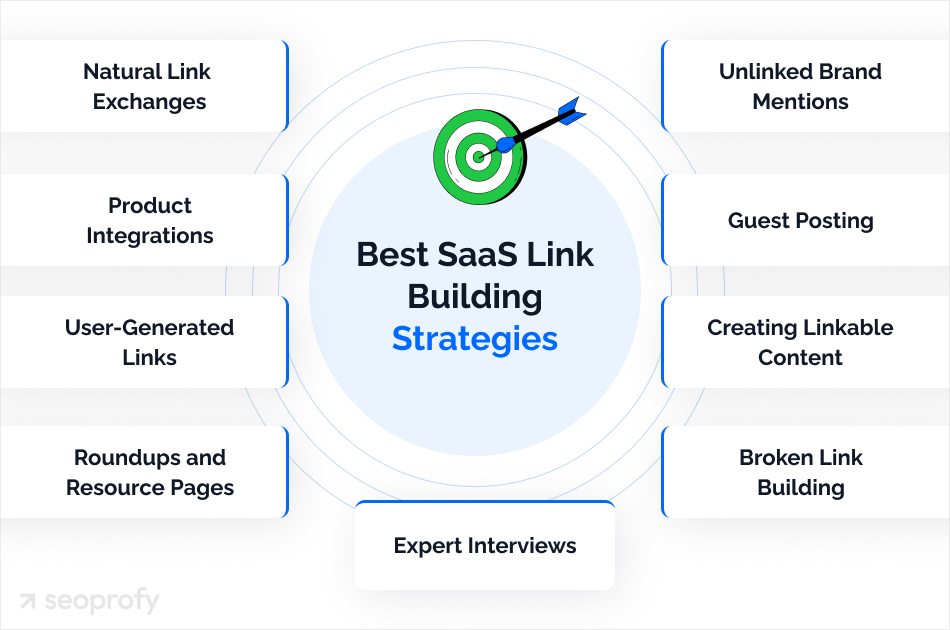
1. Unlinked Brand Mentions
Unlinked brand mentions are cases where your brand, product, or key team members get mentioned on third-party sites without an active link to your website. In most cases, this is a ready-made opportunity to get references.
We see this as one of the most effective link building tactics out there. You don’t need to convince anyone that your product is worth mentioning. If the brand is brought up, the author already knows who you are. That gives you a much better shot at getting a link than cold outreach.
Let’s move from theory to real numbers. A major platform, HubSpot has an impressive number of referring domains:
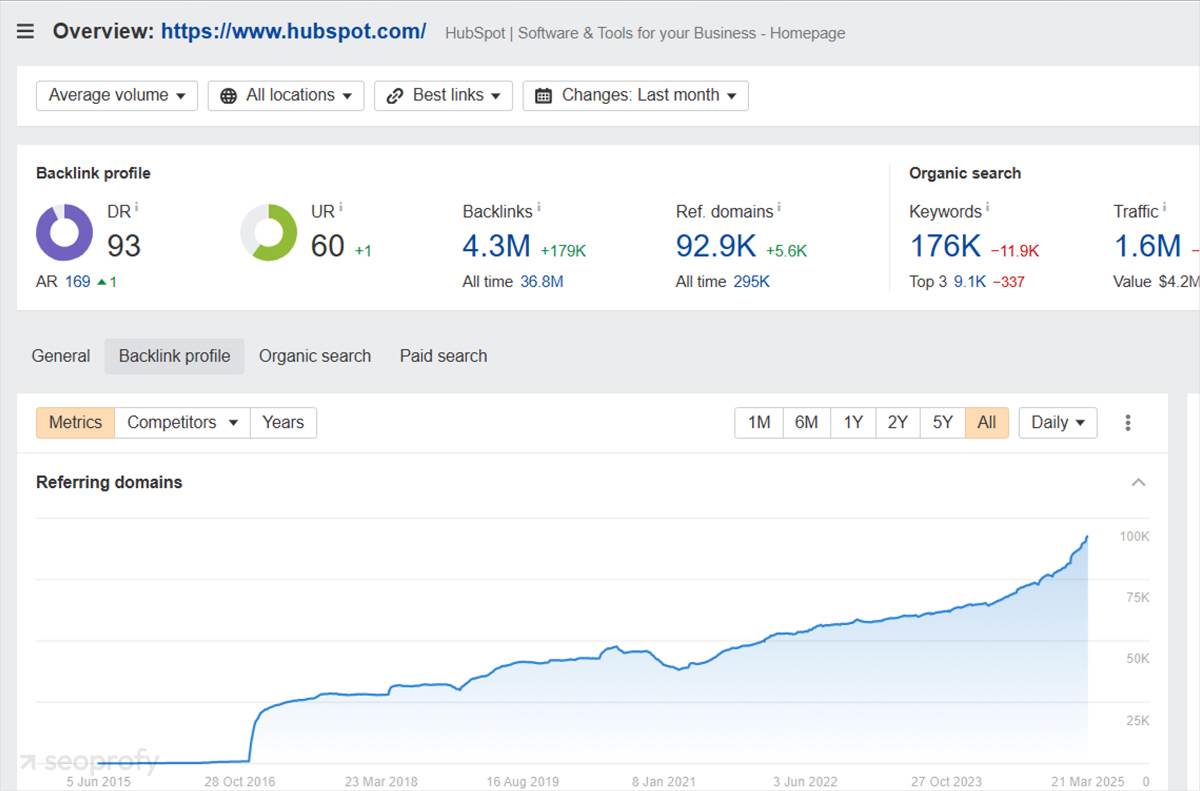
But how many unlinked mentions does HubSpot have? Over 85,000!
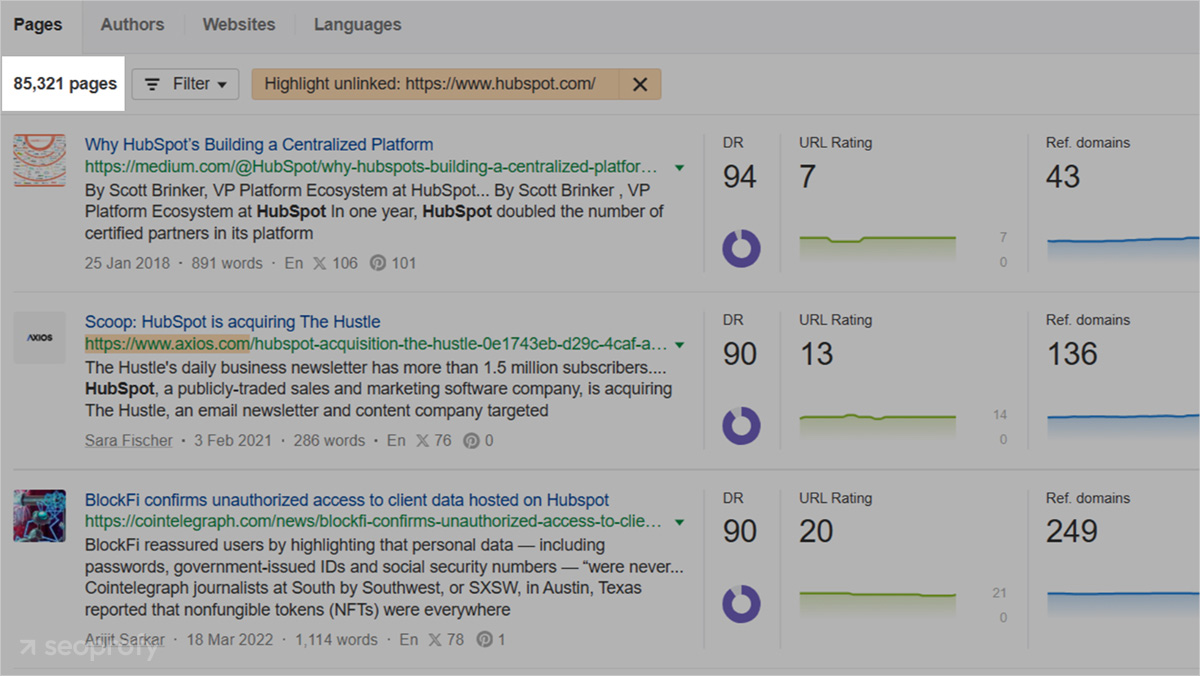
That means over 38,000 opportunities to place a backlink. Like here, for example, on this Axios page:
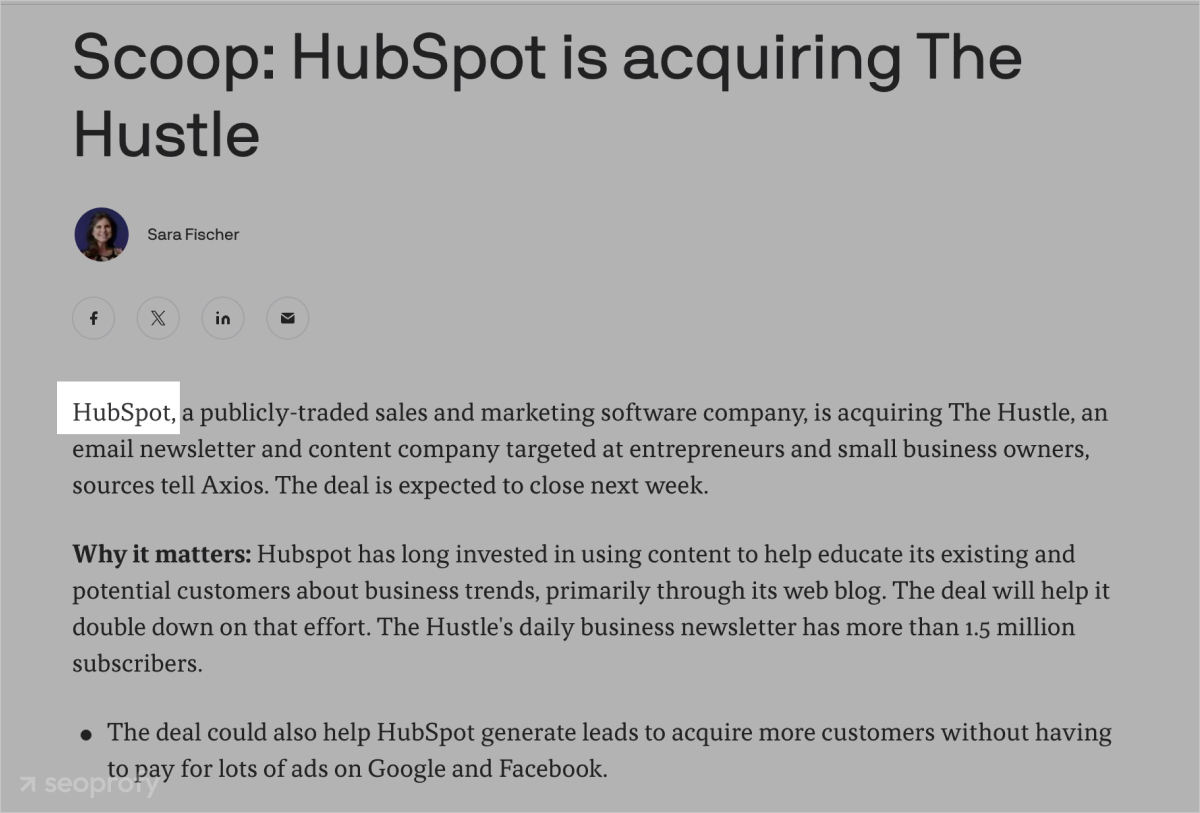
How do you find all these text-only references to your brand? The easiest way is to use Content Explorer in Ahrefs:
- Type in your brand name or a key product
- Add the “One article per domain” filter so you’re not analyzing duplicates
- Exclude domains that already link to your site using the “Highlight unlinked domains” option
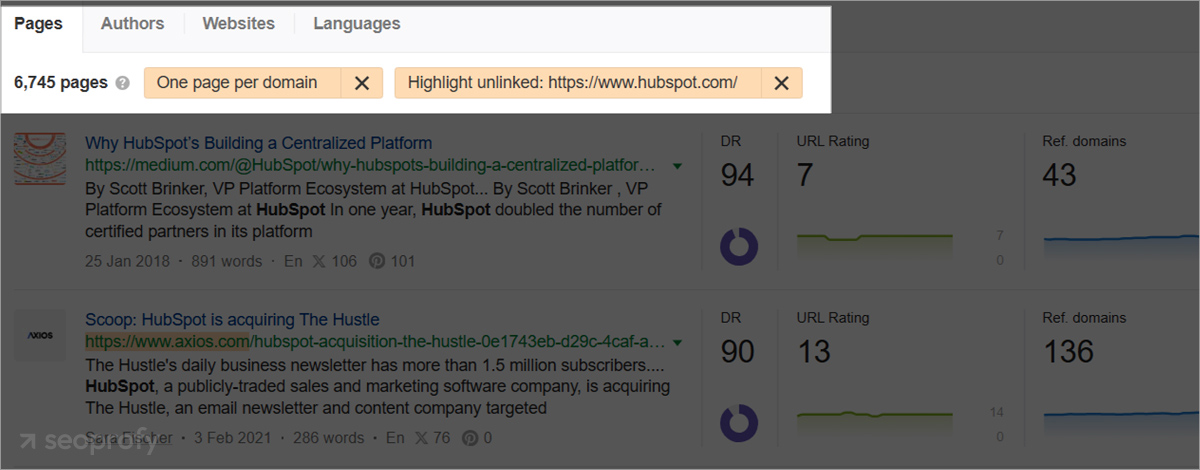
- If there are too many mentions, filter by DR and start with the top sites
Once you find the right mentions, the next step is reaching out to someone who can actually add a link. Tools like Hunter.io or FindThatEmail can help you find email addresses connected to the site. If you find several contacts, go for editors or content managers. They’re more likely to make changes to published content. Then, send a short message to the site owner or the article’s author and ask them to include a link. If you don’t hear back, follow up in 5 to 7 days.
At first glance, it looks like a free method since you don’t need to pay or create any new high-quality content. But you still have to find the pages, manually check if the link is missing, send emails, follow up, and maybe wait for weeks. So even “free” backlinks cost time and impact your final SEO pricing.
2. Guest Posting
Guest posting means publishing articles on third-party sites with an active backlink to your own. Unlike unlinked mentions, this method works even for new websites. Of course, the higher your DR and authority in the niche, the easier it is to get a yes from site owners.
The setup benefits both sides. The website gets content optimized for target keywords. You get a backlink. But how do you find sites for guest posting? There are two main approaches.
You can use Google operators by searching for terms like “your keyword” + “submit content,” “write for us,” or “guest post guidelines.” This helps you spot websites that openly accept guest contributions.
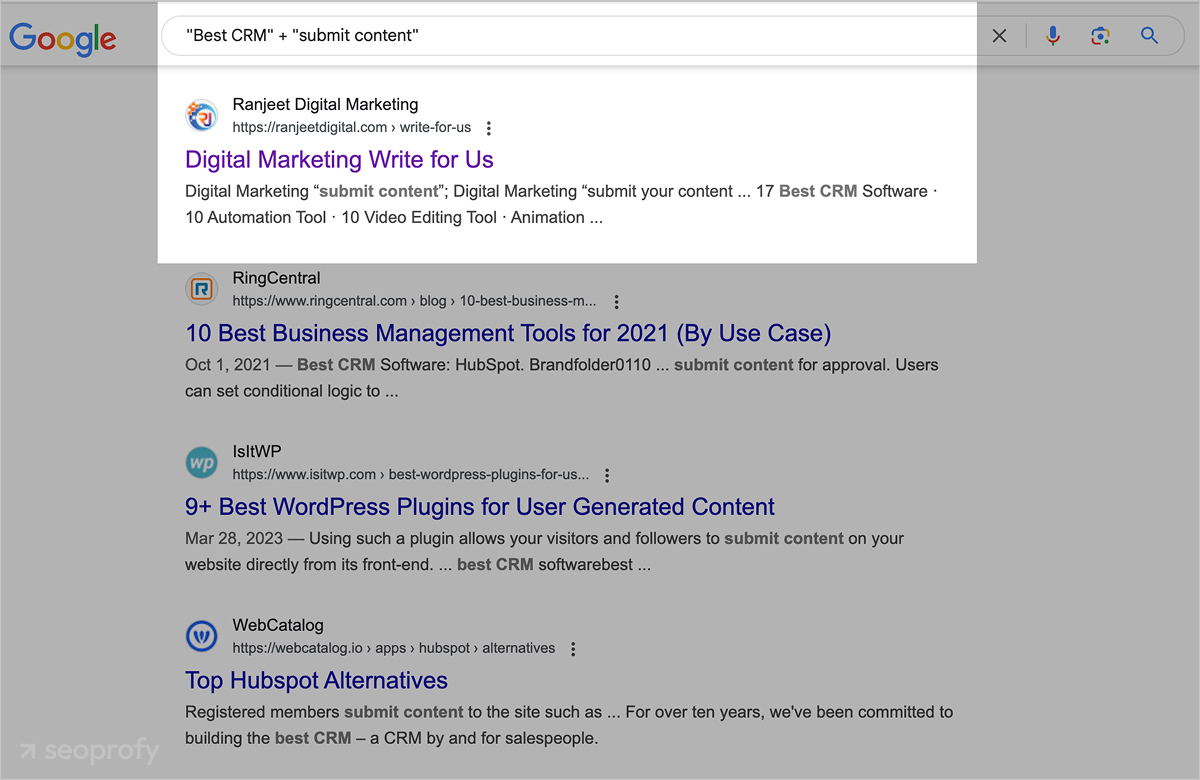
Another way is to perform competitive analysis. In Ahrefs, plug in a competitor’s domain, go to the “Backlinks” section, filter for pages with DR over 50, and check where their guest posts have been published. Then, reach out and pitch your own. Here’s what the results look like in Ahrefs with those filters applied for the SaaS site Crisp:
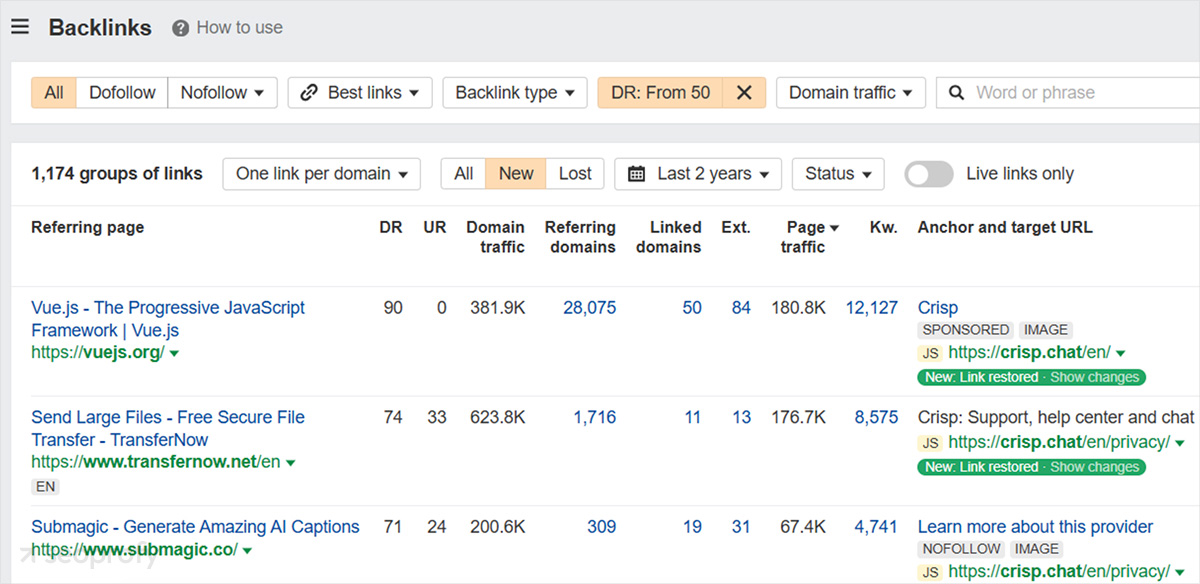
The biggest upside is full control over the content and anchor text. The downside? Guest posts often drop out of the index over time. There could be lots of reasons. The site might lose search rankings, the page could get deleted, the content might be updated, and your link removed.
3. Creating Linkable Content
Creating link-worthy content means publishing material your counterparts naturally want to reference. This is exactly how Google hopes backlinks will happen: no outreach, no guest posts, just pure quality.
Stat-based articles have always been the strongest kind of linkbait. If one of such pieces hits the top of the SERPs, backlinks usually follow. On our blog, SEO stats posts take serious effort to produce, but they attract inbound links absolutely naturally:

In-depth studies work in a similar way. Check out the backlink profile of this article by Backlinko.

It’s a research piece pulled together from multiple sources, and it’s been cited thousands of times. At SeoProfy, we’ve linked to it in our articles, too, because this kind of content works great as a reliable data source.
But stats and research aren’t the only formats that work for your SaaS link building campaign. Here’s what else tends to work well for SaaS brands:
- Case studies and strategy breakdowns: If the results are impressive, other companies will link to them.
- Interactive tools: Calculators, quizzes, checklists, or simple API-based tools.
- Deep educational guides: If your handbook covers the topic better than anything else out there, it may get shared.
Creating quality content that is a valuable resource is always time-consuming and expensive. Creating something link-worthy takes even more. You’ll need research, original data, and real depth. That’s probably the only downside of this method.
Still, that drawback can be handled if you work with an experienced team offering link building services. They’ll create content that attracts backlinks on its own, without extra costs for outreach or paid placements.
Google updates its algorithms, but strong backlinks always deliver. We build link strategies that drive traffic and boost rankings.
- Link building through digital PR and expert-driven content
- Mentions on high-authority platforms
- Proven tactics with zero risk of Google penalties

4. Broken Link Building
Broken link building is a strategy where you find dead hyperlinks on third-party websites and offer to replace them with your own relevant content. It’s a win-win. You help the site clean up invalid links, and in return, you get a quality backlink.
You can find such references using Ahrefs (check the Broken Links report in Site Explorer). Here’s an example: We ran a dead backlink check for HubSpot and got the following results:

Alternatively, use Check My Links, a Chrome extension that quickly scans pages for dead URLs. After that, the next step is reaching out to the site owner, pointing out the issue, and suggesting your link as a replacement.
A lot of SaaS founders see this method as a “free” way to earn backlinks, just like unlinked brand mentions. In reality, that’s not always the case as well. While good content can sometimes land you a free backlink, this method often runs into platform owners asking for payment in exchange for replacing the reference.
Even so, the method still works and remains one of the more popular ones. If you find a high-value site that cares about content quality, you can still earn strong backlinks without overpaying for placements.
And if you’re working with an agency that offers pay-for-performance SEO services, it doesn’t really matter how easy or difficult the method is to execute. You’re paying a fixed rate per project or link, regardless of how it’s acquired.
5. Expert Interviews
Expert interviews are one of the most natural and white hat ways to earn backlinks for SaaS, alongside creating link-worthy content. Unlike guest posts or outreach, backlinks come in organically. Blogs, media sites, and industry platforms connect to valuable insights on their own.
Here’s an example: An interview with former Slack CEO Stewart Butterfield on The Washington Post. This content attracted over 20 backlinks, most likely naturally:

You can use Ahrefs or Google to find out who’s getting mentioned often in niche blogs and media. It also helps to look at speakers from SaaS conferences and active LinkedIn creators.
What are the challenges? The main one is landing a strong expert. If they don’t have an audience, the interview probably won’t get noticed. It also takes time to prepare. But when it’s done right, these interviews can keep earning backlinks for months after they go live.
6. Roundups and Resource Pages
Roundups are list-style posts like “10 Best Tools for Email Marketing,” and resource pages are collections of useful links on a topic like “Resources for Startups” or “Helpful Marketing Materials.” Both formats offer strong backlink opportunities, especially for SaaS products that solve a clear problem.
If your product fits the topic, getting listed on one of these pages brings more than just an inbound link. You also get targeted traffic with high intent. People are already looking for a tool, and you show up among the suggested options.
To find these pages, use Google operators like “email marketing tools” plus “top tools” or “best X software” plus “resources.”
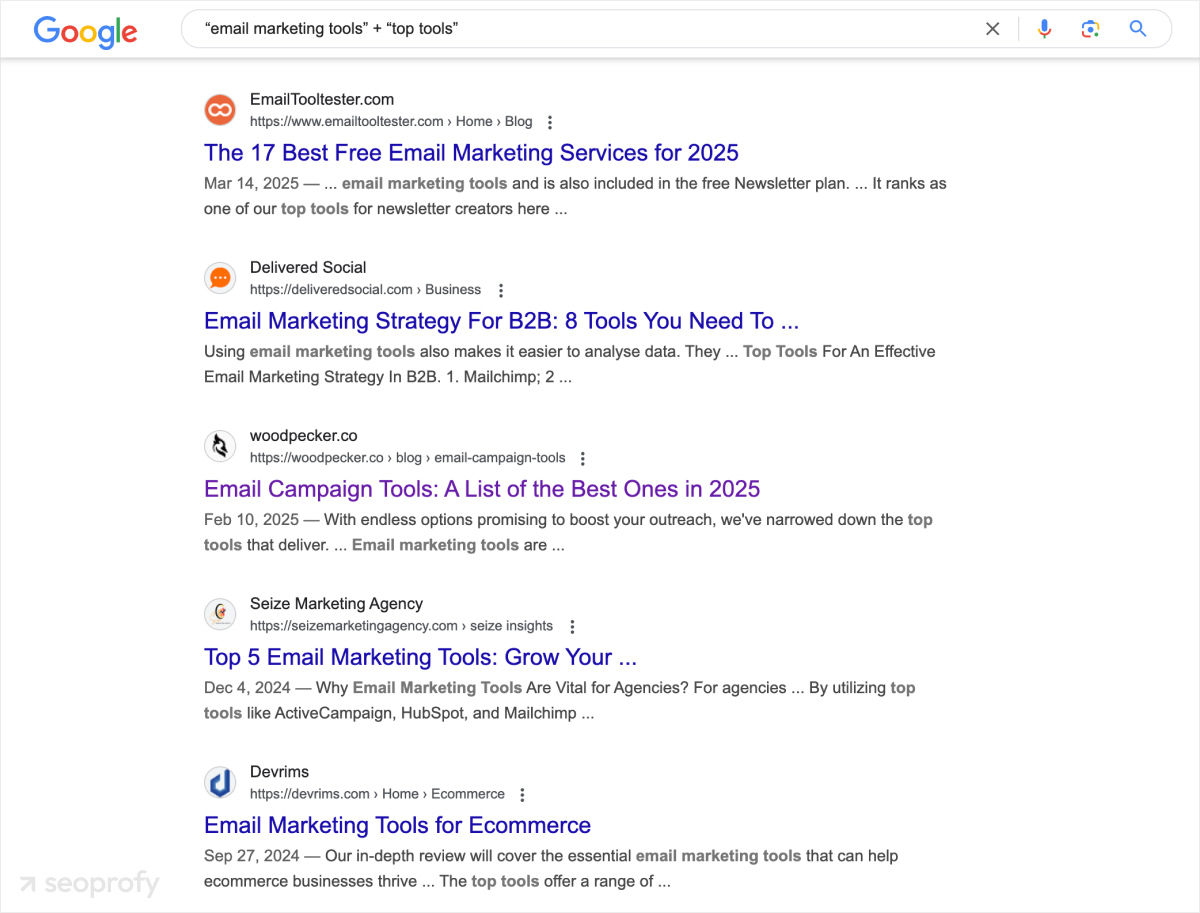
You can also check where your competitors are getting their links in Ahrefs and look for patterns. Enter a competitor’s domain and go to the Backlinks section. Then, filter the results by keywords in the URL or title (“tools,” “resources,” “top,” or “best.”)
After that comes the usual link building outreach step. You contact a website representative and explain why your reference would be a valuable addition to their content. This method takes patience, but it works. Especially in niches where roundups and tool reviews get published often. The SaaS niche fits this description perfectly.
7. User-Generated Links
User-generated links are backlinks that come from your clients naturally. These include hyperlinks in profiles, blog comments, forums, directories, and Q&A platforms like Quora or Reddit.
In SaaS SEO, these links are usually used as supporting elements. They won’t improve your DR, but they can help with indexing new pages, diversifying your backlink profile, and sometimes even bringing in traffic.
They’re easy to get, but most of them are nofollow and carry low value. Still, we sometimes recommend using them as part of a broader link building plan. This is especially useful in the early stages, when you need to build out your profile and send some initial signals to search engines.
The links should be relevant, placed in helpful contexts, and appear in spaces where your audience actually hangs out. That could be discussions about alternatives to your product or niche-specific forums.
When developing SEO strategy, think about ways users might create backlinks for you. If you publish reports, research, or launch useful tools, make them easy to share or embed. Add a “share” button or offer a copy-paste embed code. Here’s an example of how GitHub does it on their site:
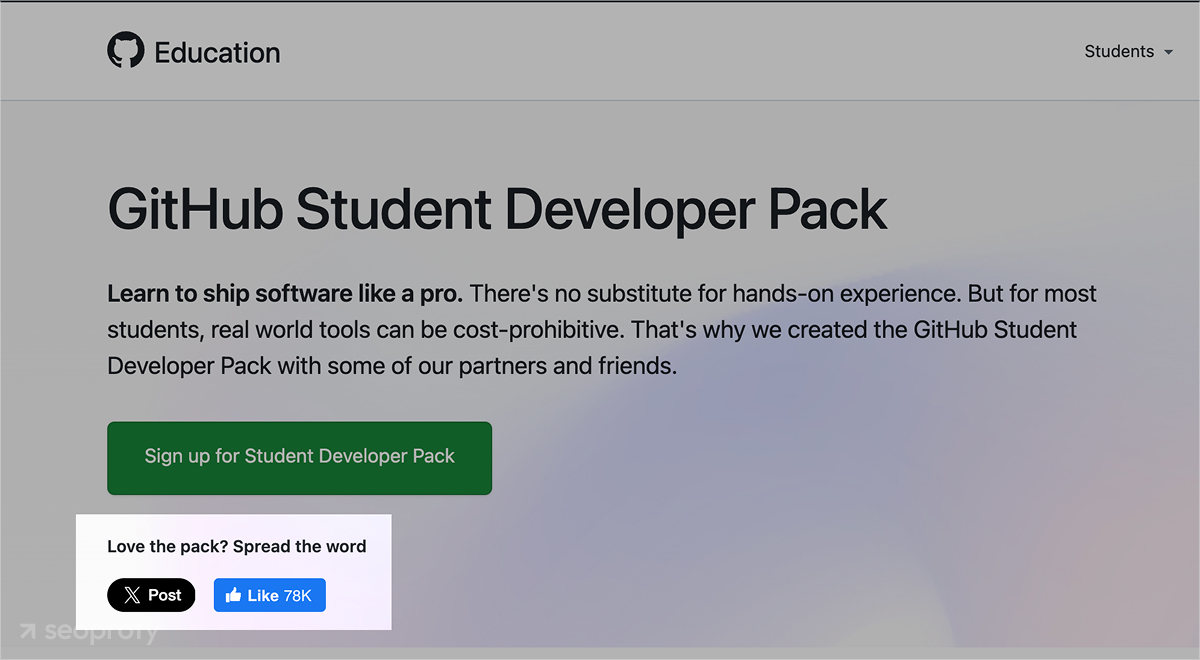
8. Product Integrations
In the previous section, we talked about links that don’t do much for your DR but help diversify your backlink profile. Now, we’re looking at the opposite — authority links that actually drive growth and do it noticeably.
We’re talking about .edu and .gov domains. These links are extremely valuable because of their trust level, age, and strong reputation in Google’s eyes. They’re not easy to get. But there’s one approach SaaS companies have been using for years. It involves partnering with educational institutions through student access programs.
Some platforms offer free access to their products for students and teachers. For example, let’s take a closer look at what Figma offers and whether they were able to earn backlinks from high-authority .edu domains:
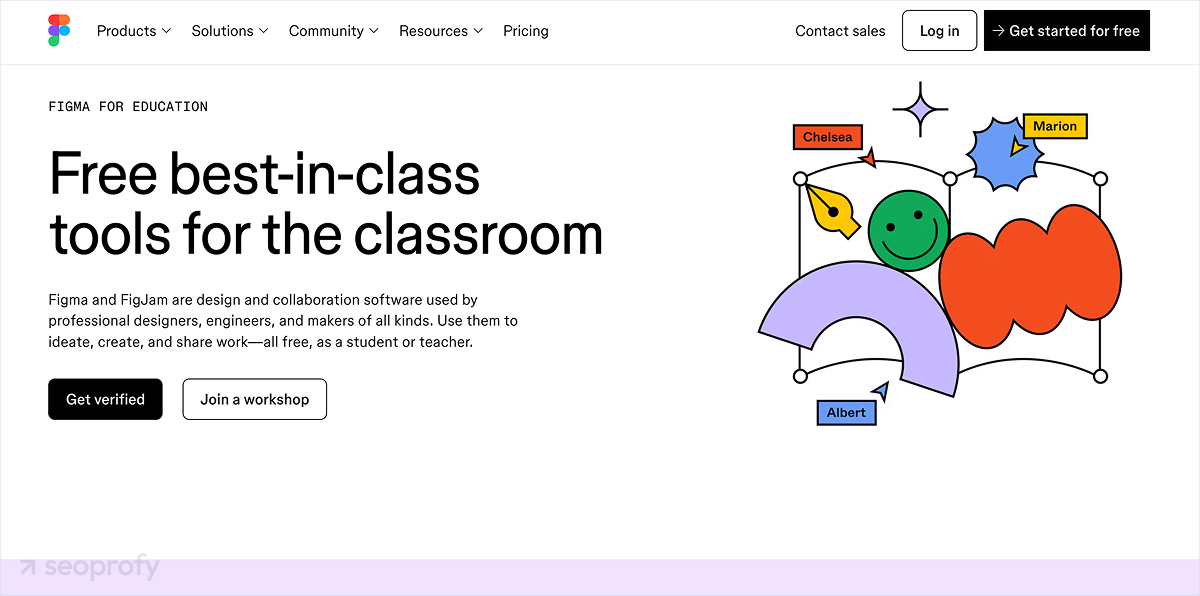
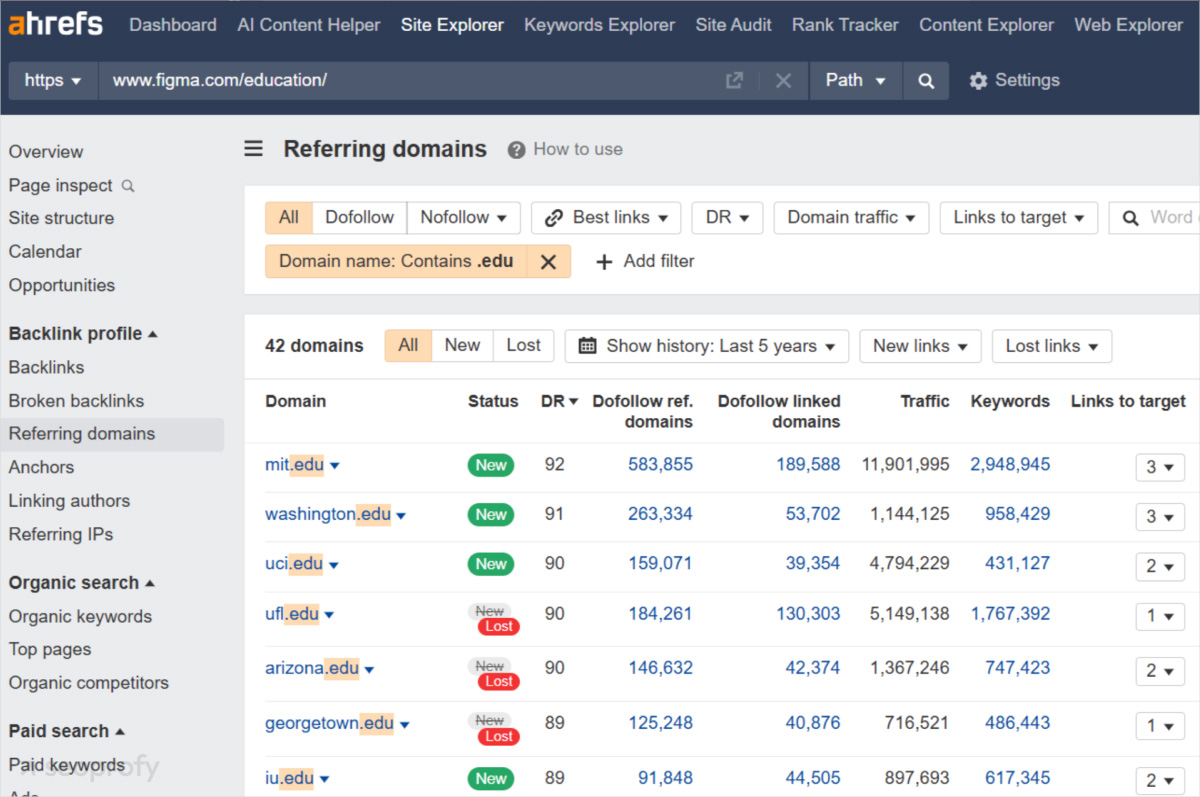
We’re not stating that hitting SEO goals is the only reason companies launch these initiatives. Educational programs can have plenty of other goals: product adoption or investing in the next generation of professionals. But from a perspective of link building for SaaS businesses, one thing is clear — this works.
Education is just one possible channel. If your product integrates well with other services, it’s worth exploring partnerships. They include mutual mentions in “integrations” pages, co-written guides, features in product docs, or API instructions. These links often stay up permanently, get indexed well, and live in a highly relevant context.
9. Natural Link Exchanges
Link swaps (or exchanges) have been a topic of debate in the SEO world for years. Some see it as a grey-hat tactic that could trigger a penalty any day. Others think it’s a legit and solid link building strategy if done carefully. As usual, the truth is somewhere in the middle.
There are two classic formats. Direct swaps (A → B, B → A), where both sites connect to each other directly. And three-way swaps (A → B, B → C), which are used to hide the exchange.
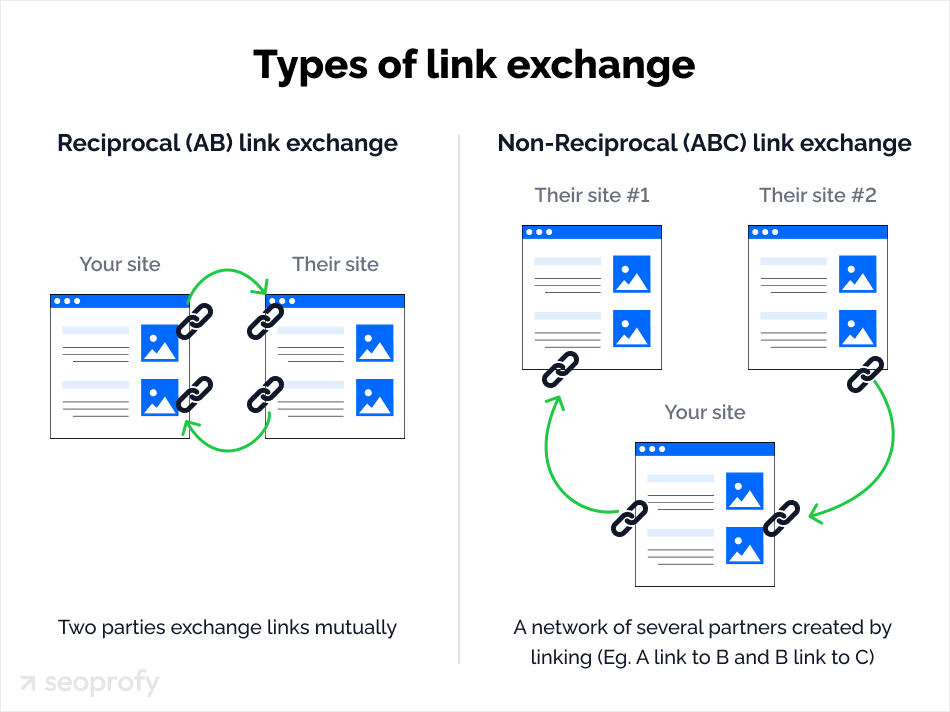
Both approaches can work, but if done aggressively or in a pattern, they can raise red flags. That can lead to a site dropping out of the rankings after getting hit with a Google penalty.
This is not a rare situation. This is why we offer Google penalty recovery services in case you go too far with link swaps.
There’s a softer and, in our view, smarter approach for you — natural reference exchange. This is when you mention another site naturally and in context. Next, you simply reach out and let the site owner know they were mentioned. Often, they’ll link back in return. This doesn’t look like a swap or a violation of Google’s guidelines.
3 Examples of Great SaaS Link Building Strategies
If you want to see how these link building techniques work in practice, it makes sense to look at SaaS companies that built a strong backlink profile and used it to grow. Below are a few real examples of teams that made link building a core part of their strategy.
HubSpot
HubSpot has long been seen as the gold standard of how to do SaaS link building through content. Their blog is like a backlink factory: complete guides, checklists, and research, all designed to earn links. The result is a strong and natural backlink profile:
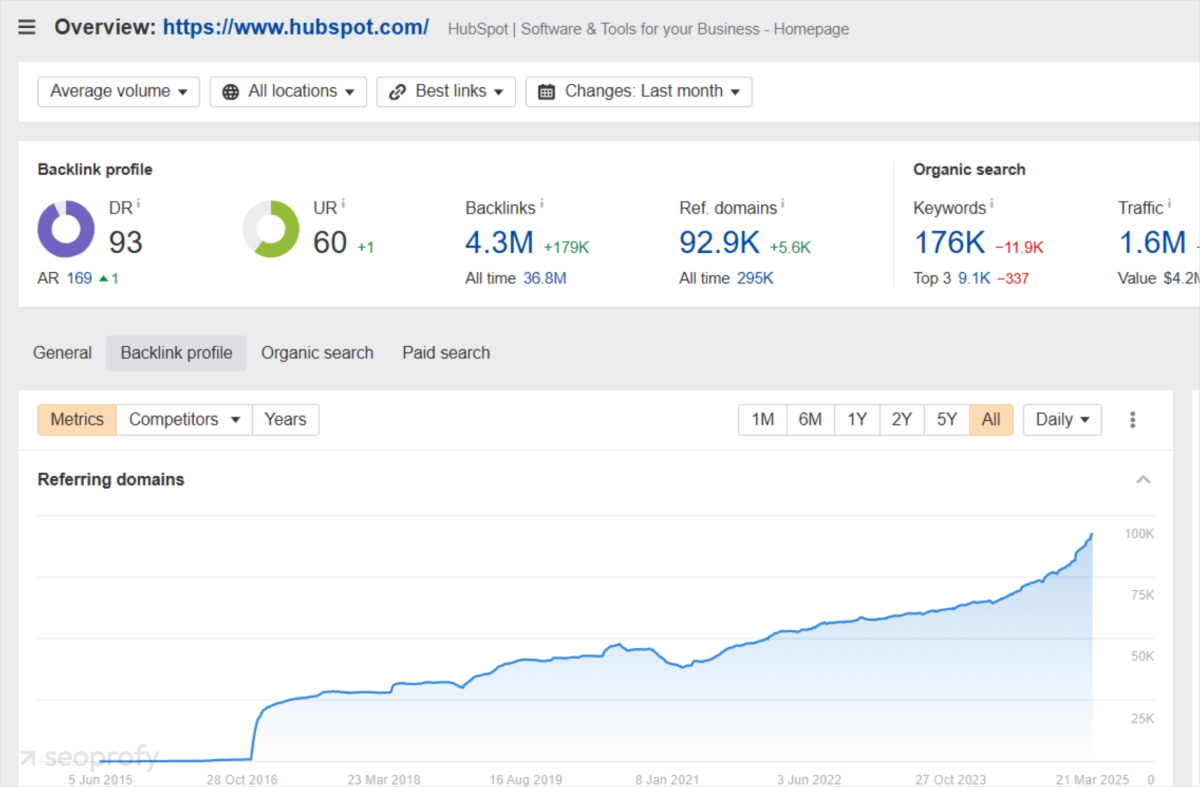
ClickUp
ClickUp also focuses on content that actually solves real problems. Their guides on productivity, project management, and teamwork often get featured in roundup posts for teams. Another key piece is their comparison pages: ClickUp vs Asana, Trello, Notion, and others. These pages attract backlinks from bloggers and SaaS review sites.
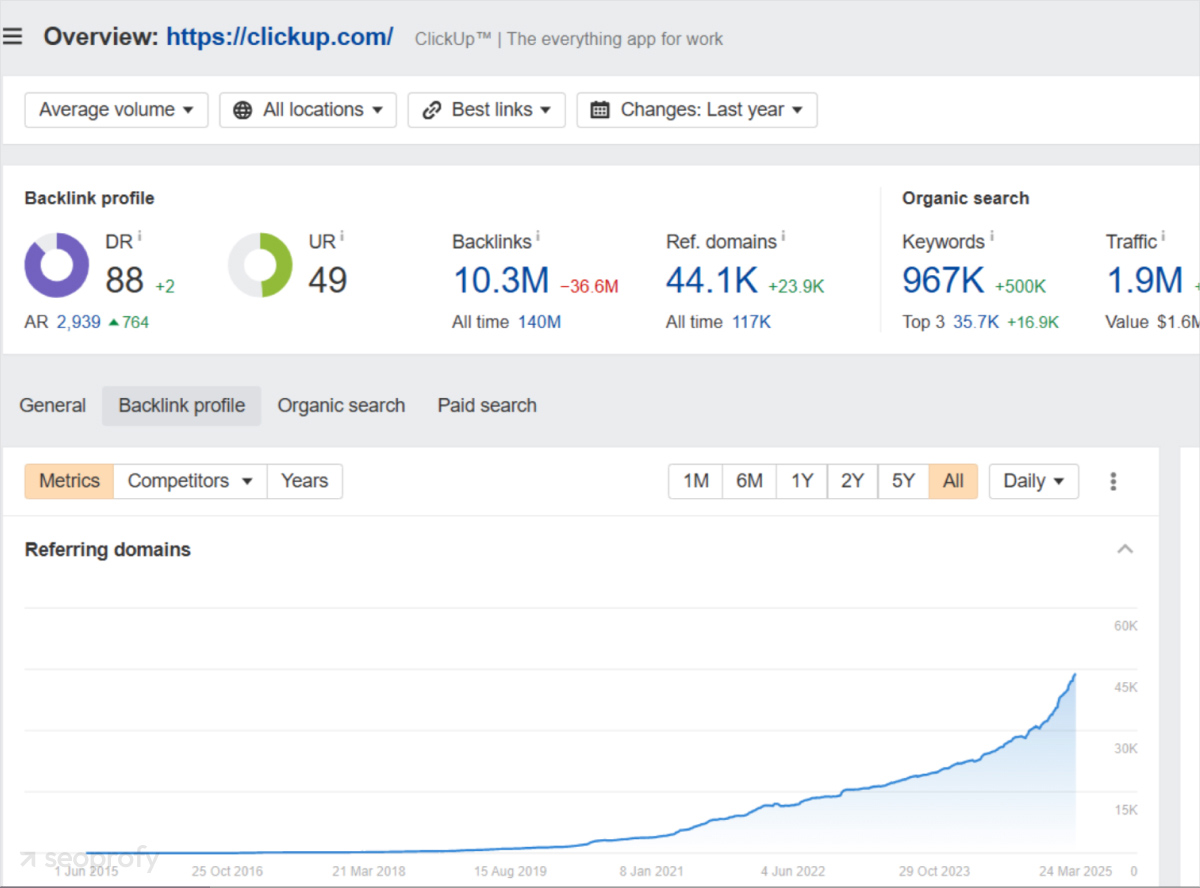
On top of that, they actively build partnerships and integrations and get links from other platforms’ websites. Their strategy is broad. More content means more entry points and more chances to earn natural backlinks.
UserPilot
Userpilot builds its link strategy around topics like product experience and user onboarding. Their blog is tailored for a B2B audience and packed with practical content: guides, comparison posts, and UI examples.
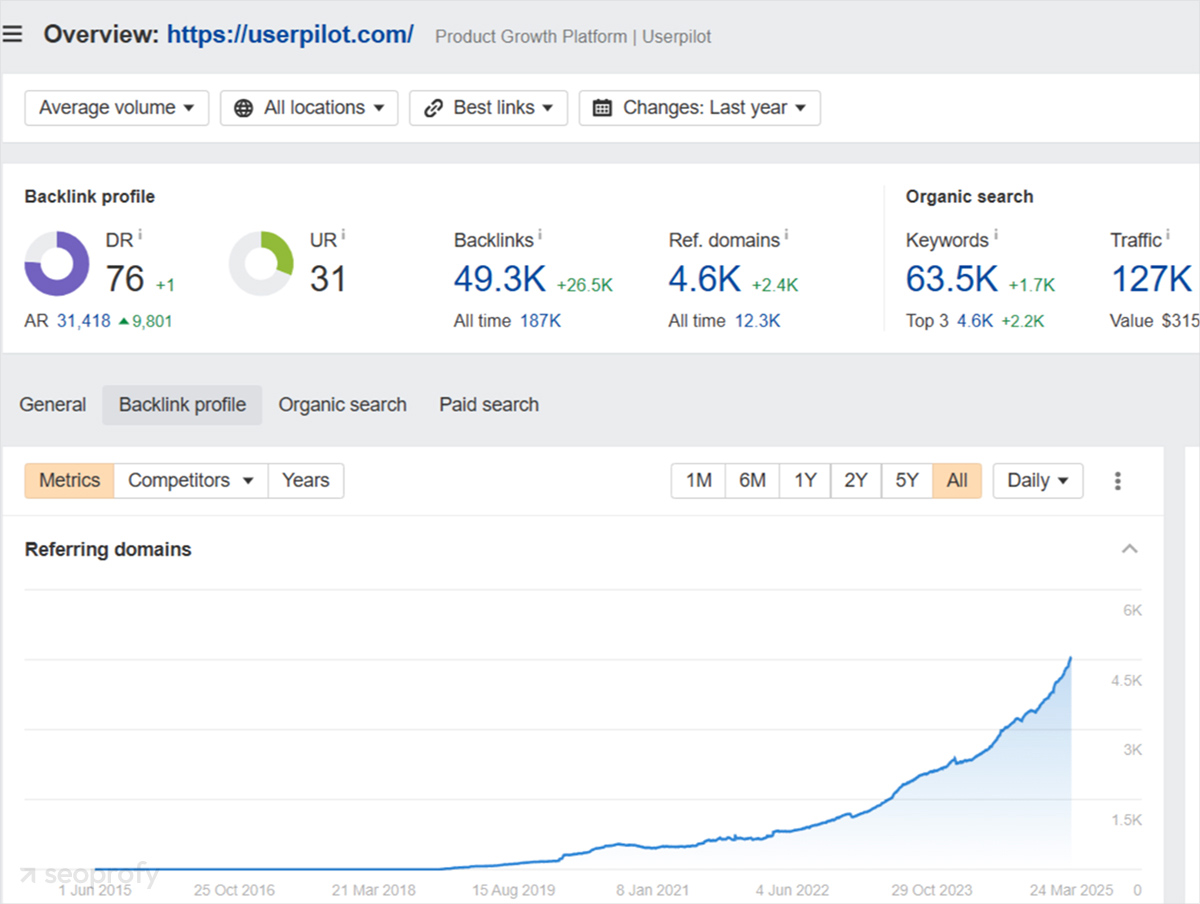
They also make good use of guest posting. They write for English-language media in their niche and earn relevant backlinks.
Most of the time, it’s done under the name of Emilia Korczynska, Userpilot’s Head of Content. She actively publishes on external platforms, handles influencer outreach, and builds the brand’s authority beyond their own site:
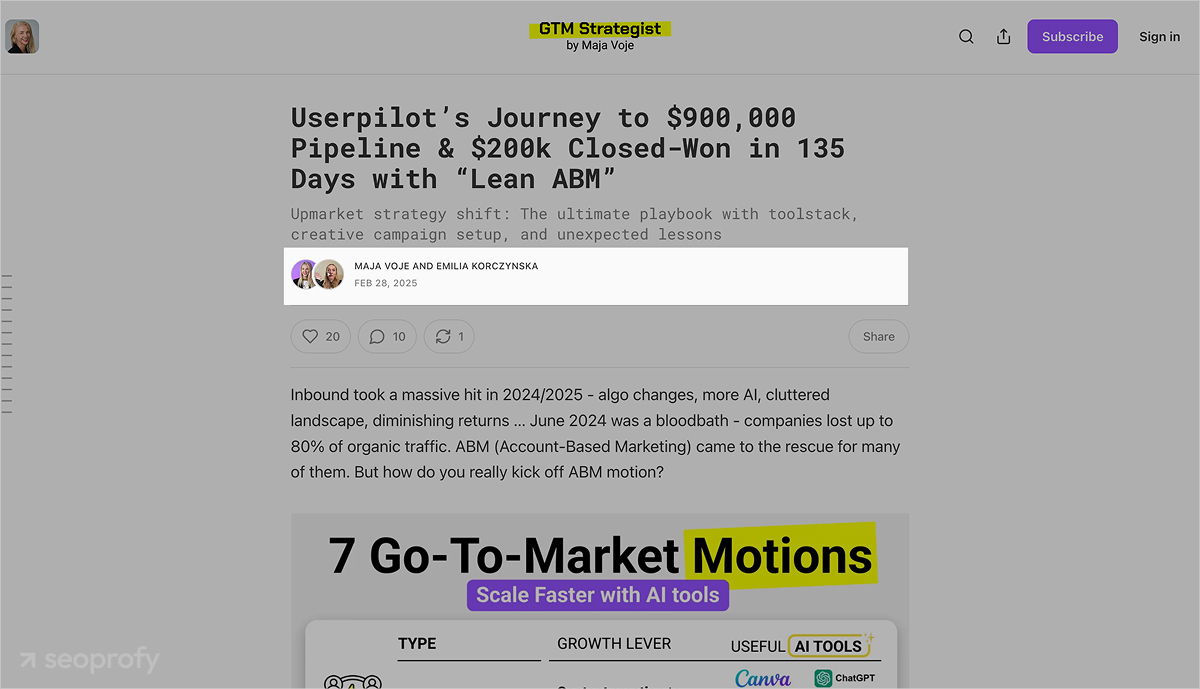
How to Measure SaaS Link Building Success
Link building for SaaS is an investment. And like any investment, it needs proper evaluation. Below are specific metrics for measuring SEO that actually matter, along with how to interpret them correctly.
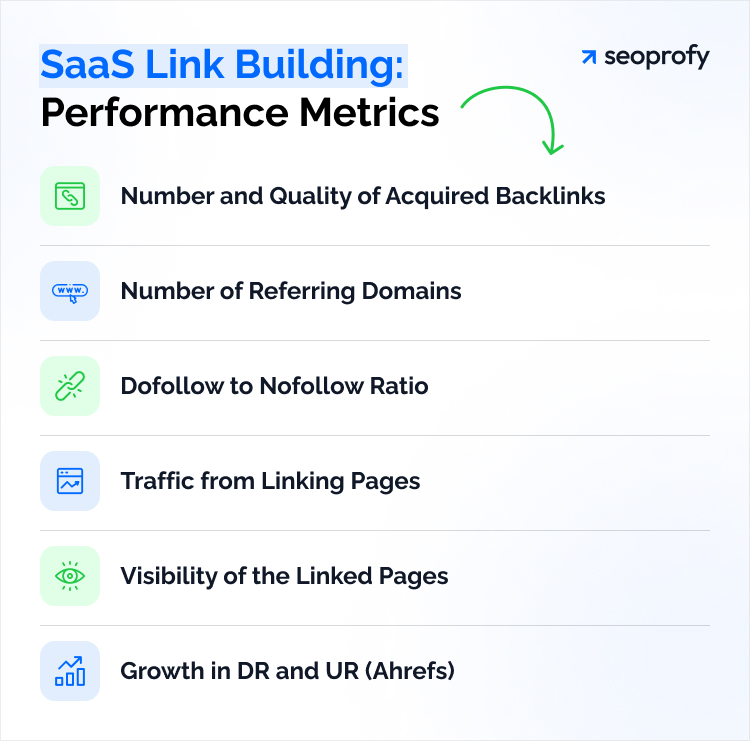
Number and Quality of Acquired Backlinks
The first and most obvious metric is how many backlinks you earned over a given period. But the more important part is where those links came from:
- DR or DA (domain authority): A score of 50 and up is usually a good sign. However, links from niche sites with DR/DA 30 to 40 sometimes bring more value than ones from big general domains with DR/DA 80.
- Relevance: The referring domain should be from your industry or a closely related one.
- Contextual placement: Links placed in the body of the article tend to work better than those in footers or sidebars.
Also, make sure your hyperlink profile includes branded, generic, and keyword-rich anchors in natural proportions. A well-balanced anchor text strategy helps build more resilient backlinks.
Number of Referring Domains
An increase in the number of unique domains linking to your site is one of the most reliable signals Google uses to assess authority. However, even if you’ve earned 10 backlinks but from the same site, search engines still see it as a single source.
The real priority is growing the number of unique domains, not just the total number of hyperlinks. This is a core focus of SaaS SEO services, which prioritize sustainable link acquisition strategies over sheer volume. You can track the dynamics in link building tools like Ahrefs (Referring Domains report), Semrush (Backlink Analytics), or Google Search Console (Links section).
Dofollow to Nofollow Ratio
A healthy backlink profile needs variety. One of the key things to look at is the ratio between dofollow and nofollow links. The ideal balance is roughly 70 to 30 in favor of dofollow ones. Why?
If the ratio is skewed too far in either direction, it can become a problem. If nearly all of your backlinks are nofollow, the SEO impact will be minimal since these don’t pass link juice or do so in a very limited way. On the other hand, if 100 percent of your backlink profile is made up of dofollow links, that can look suspicious to Google’s algorithms.
That’s why it makes sense to conduct an audit regularly and keep that balance in check. For that, use Ahrefs: open the Backlinks tab and filter by “link type”. There are also free browser extensions like the NoFollow Chrome Extension that highlight references directly on the page.
Sometimes, fixing your profile means cutting out what hurts it. When running a backlink audit, you might come across plenty of links that offer no value to your site. You can remove them using the disavow tool.
Disavow is usually applied to dofollow links from suspicious sites since they pass link equity. But if the spam is massive and looks like an attack, even nofollow links are sometimes added to the disavow file to reduce noise and signal that you have nothing to do with them.
However, take it slow. In one of our SaaS SEO case studies, we explained in detail how we approached this process to make sure the site’s traffic didn’t drop suddenly and drastically.
Traffic from Linking Pages
A backlink from a dead page is just a formality. To evaluate a hyperlink properly, check whether it gets traffic and ranks for any keywords. You can do this in Ahrefs: open the URL in Site Explorer and go to the Organic Keywords tab. Alternatively, check the domain in Similarweb to understand whether the site gets traffic overall.
Visibility of the Linked Pages
Track how the rankings of the pages you’re building links to are changing. Don’t focus on just one keyword. Look at the full cluster of terms the page is supposed to rank for. This gives a more accurate picture of how effective your link building efforts are.
Use SEO tools like Ahrefs (Organic Keywords), Semrush (Position Tracking), or Google Search Console. If visibility keeps growing after two or three months, it’s a sign that your backlinks are working and the strategy is moving in the right direction.
Growth in DR and UR (Ahrefs)
DR and UR (URL Rating) are Ahrefs metrics that reflect the strength of your backlink profile. DR measures the overall authority of a site based on the number and quality of referring domains. UR shows the reference strength of a specific page. These are indirect signals that Google doesn’t use directly. However, they still help you understand whether your site is moving in the right direction.
How to Calculate ROI from Link Building
One of the most important SaaS link building tips we can share is to always track your costs. Calculating SEO ROI is harder than in paid advertising because the results don’t show up right away. Still, you can use a basic formula like this:
ROI = (Revenue growth from organic traffic – Link building costs) / Link building costs × 100%
To get accurate numbers for this formula, start by running a few key calculations. Here’s what to do:
- Identify a group of target pages you’ve been building links to
- Count how many new leads or customers came from organic traffic to those pages
- Estimate the average deal size or LTV of those customers
- Factor in all costs, including salaries for link builders and copywriters, plus placement fees
Create Your SaaS Link Building Strategy Today
Good news. SaaS isn’t the toughest niche for link building. Some industries are nearly impossible to build links in without aggressive tactics or massive budgets. But that doesn’t make SaaS easy.
In reality, most organic backlinks go to bigger names. New players have it harder: A theoretical take on how to build backlinks for SaaS with no link history and outreach without established connections often turns into a bunch of silent inboxes.
To make link building for SaaS companies work, you need a team of link builders, copywriters, and analysts. Assembling that in-house for a single project is expensive and rarely efficient. A smarter move is to bring in people who’ve done it dozens of times before.
At SeoProfy, our outsource SEO team helps SaaS companies earn high-quality backlinks from trusted platforms with clear metrics and a focus on real results.



